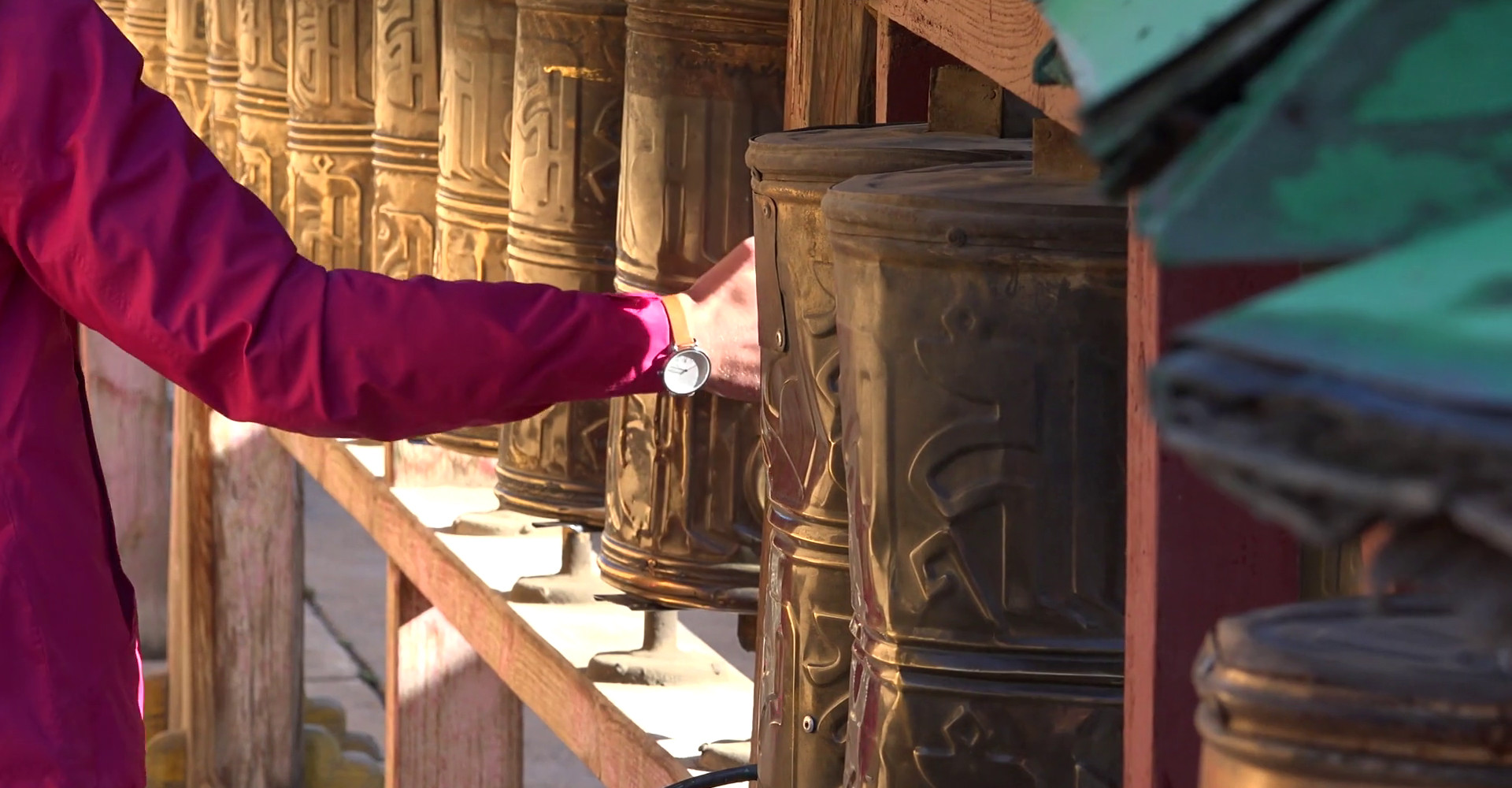Religion in Mongolia has been traditionally dominated by the schools of Mongolian Buddhism and by Mongolian shamanism, the ethnic religion of the Mongols. Historically, through their Mongol Empire the Mongols were exposed to the influences of Christianity (Nestorianism and Catholicism) and Islam, although these religions never came to dominate. During the socialist period of the Mongolian People's Republic (1924-1992) all religions were suppressed, but with the transition to the parliamentary republic in the 1990s there has been a general revival of faiths.
According to the national census of 2010, 53% of the Mongolians identify as Buddhists, 38.6% as not religious, 3% as Muslims (predominantly of Kazakh ethnicity), 2.9% as followers of the Mongol shamanic tradition, 2.1% as Christians, and 0.4% as followers of other religions. Other sources estimate that a significantly higher proportion of the population follows the Mongol ethnic religion (18.6%).
Lamaist Buddhism
The primary religion of Mongolia is Lamaist or Buddhism. This form of Buddhism was first introduced during the Mongolian invasion of Tibet in the 13th century. However it was not adopted on a large scale until the end of the 16th century. Lamaist Buddhism shares some themes with shamanism in its reliance on reincarnation and deities that represent different facets of life. Lamaist Buddhism's hierarchy of spiritual leaders also closely resembled the unified social structure created by Genghis Khan in the 13th century. Buddhism flourished in Mongolia after the 16th century, and monasteries were built across the country. The Buddhist clergy succeeded in establishing political power and Mongolian nobility used the Buddhist clergy to further validate their own claims to rule. The clergy maintained authority in much of Mongolia and gained control of about Mongolia ended, monasteries functioned as a political entity in Mongolia.
With the establishment of the Soviet-influenced Mongolian People’s Republic in 1924, the Mongolian government officially began to purge religion from the country. Arbitrarily high taxes were imposed on the once-exempt monasteries. A formal process of incarceration and assassination of Buddhist lamas went into effect. By the end of 1938, only one monastery was left in the entire nation.
Gandan Monastery reopened in 1944 under strict government supervision, and was the only functioning Buddhist monastery in the country until the Mongolian Buddhist University opened in 1970.
Before visiting Buddhist temples, it is wise to contact the temple ahead of time to ensure that you meet with the appropriate person. Buddhist centers often have set times open to the public. Ask for approval from monks before entering a temple during prayers or debates.
Shamanism
Mongolian people have traditionally practiced shamanism. Shamanism holds that all people, animals, and objects are endowed with spirits that influence human beings and the world around them. A shaman holds a position of power and authority in Mongolian society because he—or she—is chosen by the spirits to act as intermediary between the human and spirit worlds. Shamans have played an important role in preserving and maintaining traditional culture. Shamanist Mongolians in the past lived highly ritualistic lives, and many of the customs and traditions developed through early Mongolian shamanism still exist in Mongolia today. Since the fall of communism in the 1990s, shamanism has increased in popularity as many Mongolians have sought to rekindle Mongolian traditions and cultural identity.
Islam
Of the approximately 4% of Mongolian citizens who practice Islam, the majority are ethnic Kazakhs who live predominantly in the westernmost province of the country, Bayan- Ulgii. Islam first reached the Mongolian steppe around the eighth century. Islam was adopted by Mongolian leaders during the expansion of the empire after the 13th century. The Kazakhs who currently live in western Mongolia came to Mongolia to escape persecution from Czarist Russia. They were able to maintain their traditional religious beliefs because the vast distances and rugged terrain of the Altai Mountains kept them isolated. During the 70-year period of communist rule in the 20th century, the government stifled the public practice and display of Muslim tradition.
After communist rule ended in 1990 and Mongolia constitutionally recognized freedom of religion, Islam reemerged in the public arena. Devotional exercises and studies became more prominent as mosques were built in Bayan-Ulgii province. As of 2010, Mongolia had 44 Muslim centers of worship registered with the state, most in the western aimag of Bayan- Ulgii. The Mongolian Muslim Association estimates that Mongolia has over 150,000 Muslims and more than 3,000 students in the nation’s Islamic training centers and schools.
Christianity
Christianity reached Mongolia around the seventh century in the form of Nestorian Christianity, a sect with unique views about the separation of Jesus Christ’s human and divine natures. Christian groups have always been small in Mongolia, and in the current post-socialist environment, Christians make up approximately 4% of the population. Of these, 90% are Protestant, 9% are Mormon, and the remaining 1% is either Roman Catholic or Russian Orthodox.
Christian conversion has been on the rise in recent years. However, as part of Mongolia’s policy of religious freedom, the government does not collect official data on religious converts. Western Protestant church groups estimate there have been 60,000 Mongolian converts from 1990-2008. Many Buddhist leaders and clergy have stated that Christianity is a threat to Buddhism and Mongolia’s traditional way of life. They would like special status for Buddhism, and some have lobbied that Buddhism be declared the national religion, in addition to its current status as the country's "traditional religion."




